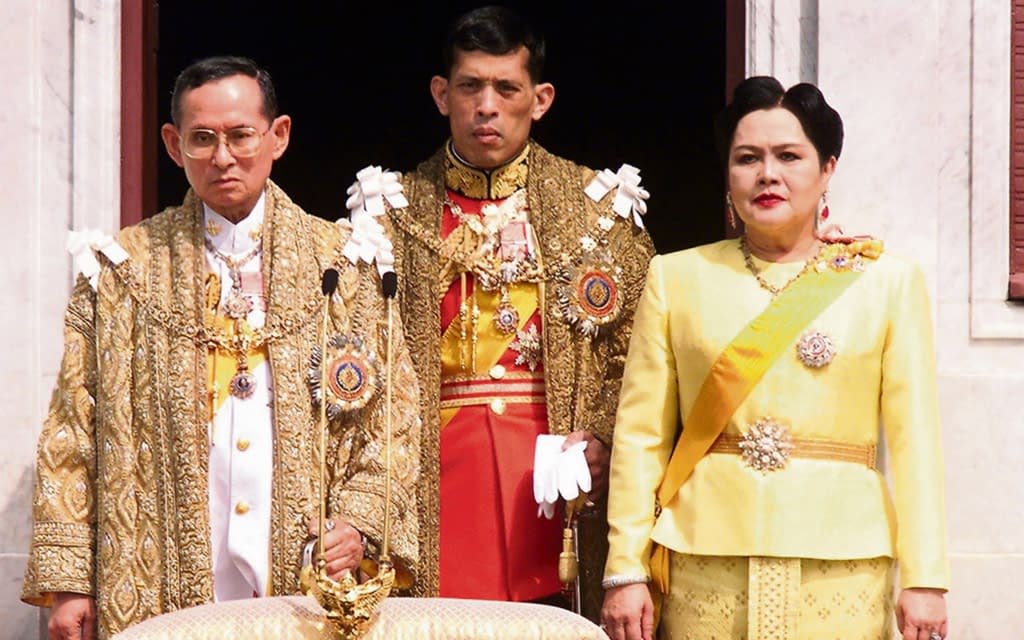Known as Siam until 1939, Thailand is the only South-east Asian country never to have been colonised by a European power. The world’s longest reigning God-like monarch Thai King Bhumibol Adulyadej (88) died on October 13, 2016, and the reluctant 64-year-old Crown Prince Maha Vajiralongkorn is to be named as the country’s new King on December 1, 2016. The much-married –with all the three marriages ending in divorce – Crown Prince has been living in Paris and the western media prefers to call him a “Playboy”.
In the military-ruled Thailand there is a strict penal provision for imprisonment if the media or any citizen insults the Royal family or uses a derogatory remark about them.
Thailand is a constitutional monarchy since 1932. The King in the current Chakri dynasty is often referred to as Rama, the ideal ruler. Though the country is Buddhist, the influence of Indian culture and Hindu customs is visible in every aspect of life. The coronation of the new King would be performed by Hindu Brahmanas first, followed by the Buddhists.
In “Hinduism in Thai Life”, Santosh N Desai states: “The first is the Rajyabhiseka, the Brahmanical Rajasuya, the anointment. The second part of the Thai ceremony is the actual crowning. The coronation made the King a divine being – Siva or Visnu – a possessor of Sakti, the divine power. The Thai King, like the ancient Hindu King of India, always sits on the throne facing the east. The idea implied is that the King is equivalent to the Sun. The Kings are Gods but they are more particularly Sun-Gods.”
The Hindu epics, primarily the Ramayana, depict for the Thai the model of a righteous King, the Dharma-Raja, and also give them an outlet for their literary and artistic expression. The nation of 68 million people is currently in a state of mourning, which will last a year. Although the heir to the throne can become the King at any time, the Royal Coronation will not be held until the official cremation takes place late next year.
The King Bhumibol, born in 1927, was King Rama IX and his Crown Prince would be named as King Rama X. Bhumibol ascended to the throne following the death of his brother, King Ananda Mahidol, on June 9, 1946. He was officially crowned on May 5, 1950. He was married to Queen Sirikit and the couple’s four children include Princess Ubolratna Rajakanya (b.1951), Crown Prince Maha Vajralongkorn (b.1952), Princess Maha Chakri Sirindhorn (b.1955) and Princess Chulabhom Walailak (b.1957). Princess Sirindhorn never married and is a world-renowned scholar of Sanskrit. Others are married and are divorced, having children too. The Crown Prince has four children but he prefers to stay away from them.
Dr Satya Vrat Shastri (86), the world-renowned Sanskrit scholar and Professor of Delhi University, taught Sanskrit to Princess Sirindhon when he was on assignment as the Visiting Professor at Chulalongkorn University of Thailand.
He says: “Thai language has majority of Sanskrit as well as Pali words.” Prof Shastri has got research-based books like “Brahmanas of Thailand”. He got the Royal honour and Jnanpith Award too.
The Prime Minister, General Prayuth Chan-Ocha, and his cabinet got the new Constitution approved through referendum. It is time to implement it. Elections are tentatively set for mid-2017. Thailand has been facing frequent coups. Since January 2004, thousands have been killed and wounded in the insurgency. Otherwise a beautiful country, Thailand is facing separatist violence predominantly in Malay-Muslim southern provinces, forced labour and sex trafficking, illicit drug trafficking and spread of the deadly HIV/AIDs. The country with an estimated population of 68,200,824 has 4,38,100 people living with HIV/AIDs and an average 14,000 yearly deaths due to HIV/AIDs.
The Ramayana is very popular among the masses and people expect the ideals of Rama in their God-like King. “The Thai story does not regard abduction of Sita by Ravana as an immoral act, violating the sacred state of matrimony.” writes S N Desai. He adds: “The Thai story describes Ravana’s action with sympathy and understanding. Ravana’s ability as a scholar and a resourceful character is admired.”
The old city founded in 1350, Ayutthaya (Ayodhya), just 70 km north of the Thai capital Bangkok, was the capital of a powerful Buddhist-Hindu empire for 400 years but war with neighbouring Burma (Myanmar) led to its destruction in 1767. All that is left today are the magnificent ruins, still a revered place of pilgrimage for Buddhists.
Tim Curtis of UNESCO is quoted saying, “In the 17th century, Ayutthaya was one of the world’s largest cities as big as Paris.” The national symbols of Thailand are Garuda-mythical half-man, half-bird figure and elephant. Historically, the status of Kings was evaluated by the number of white elephants in their possession. To pay respect to Bhumibol, 9 white elephants and two white painted elephants had visited the Grand Palace on November 8, 2016. This is quite significant.
Next Column : The Untold story of the Indian Constitution
(The writer is a Socio-political Historian. E-mail: haridesai@gmail.com )







